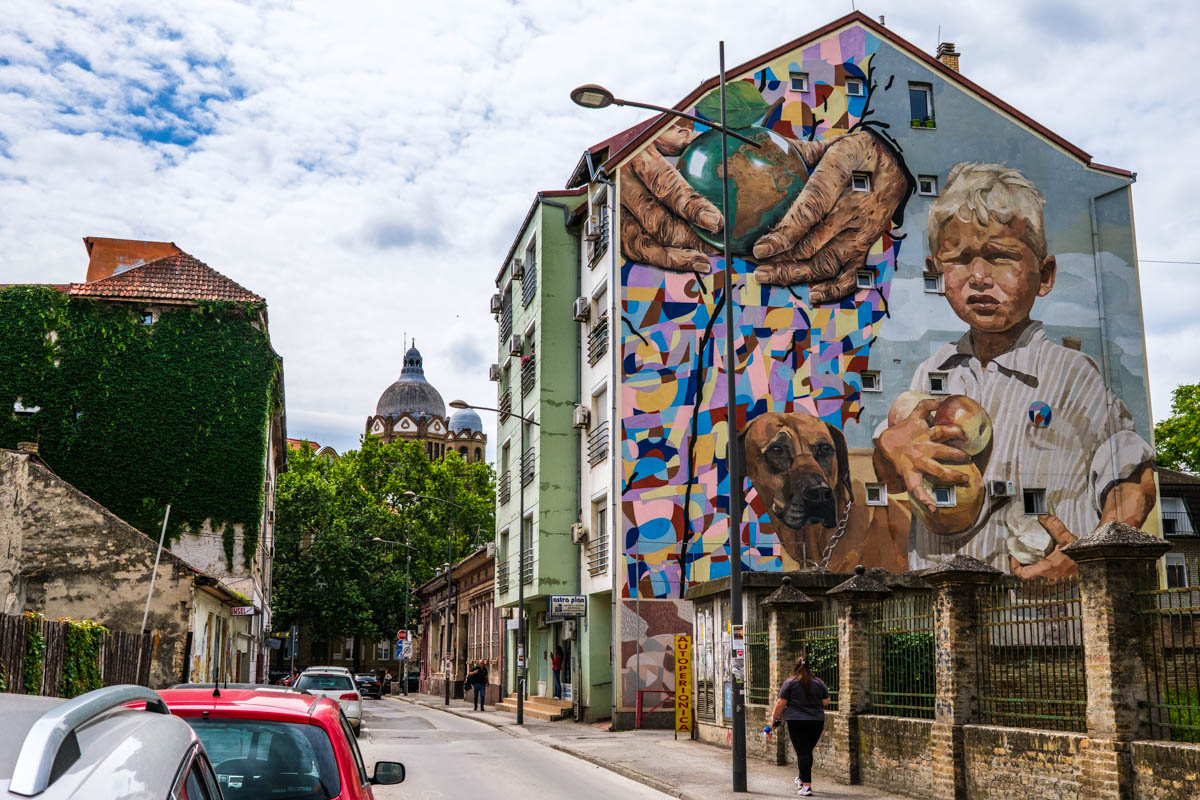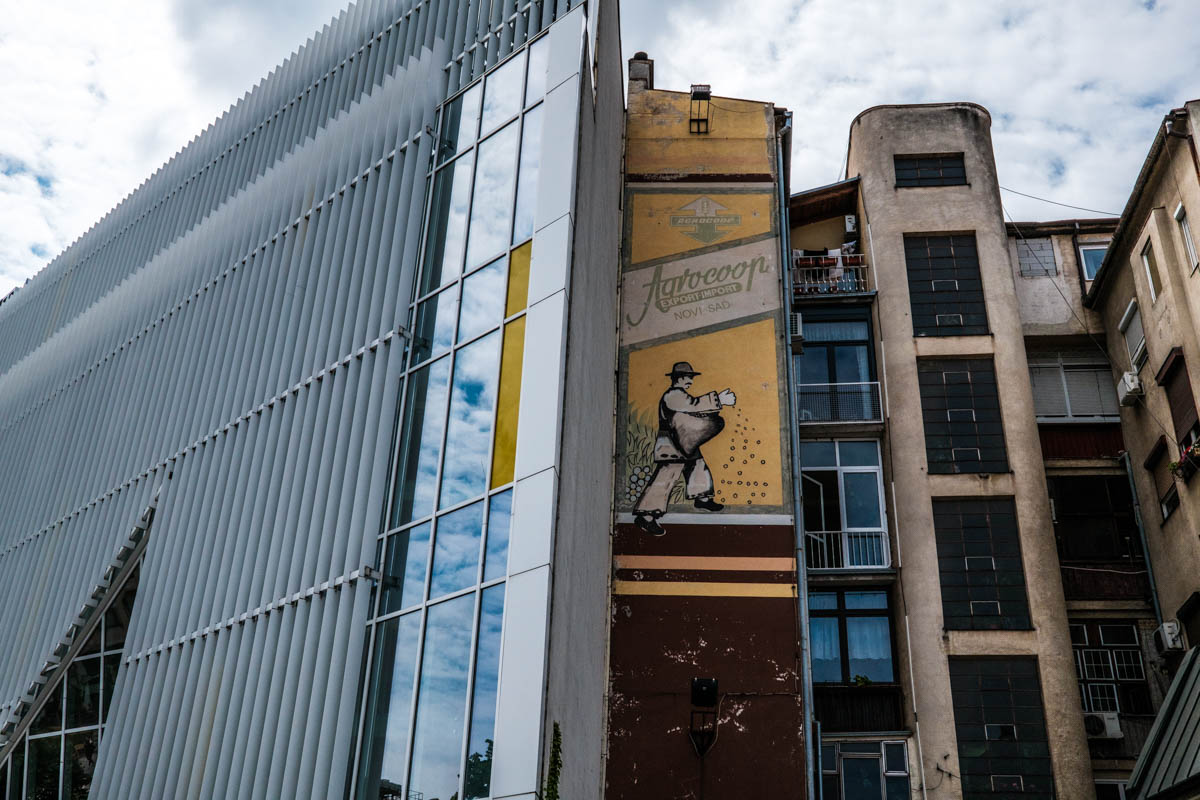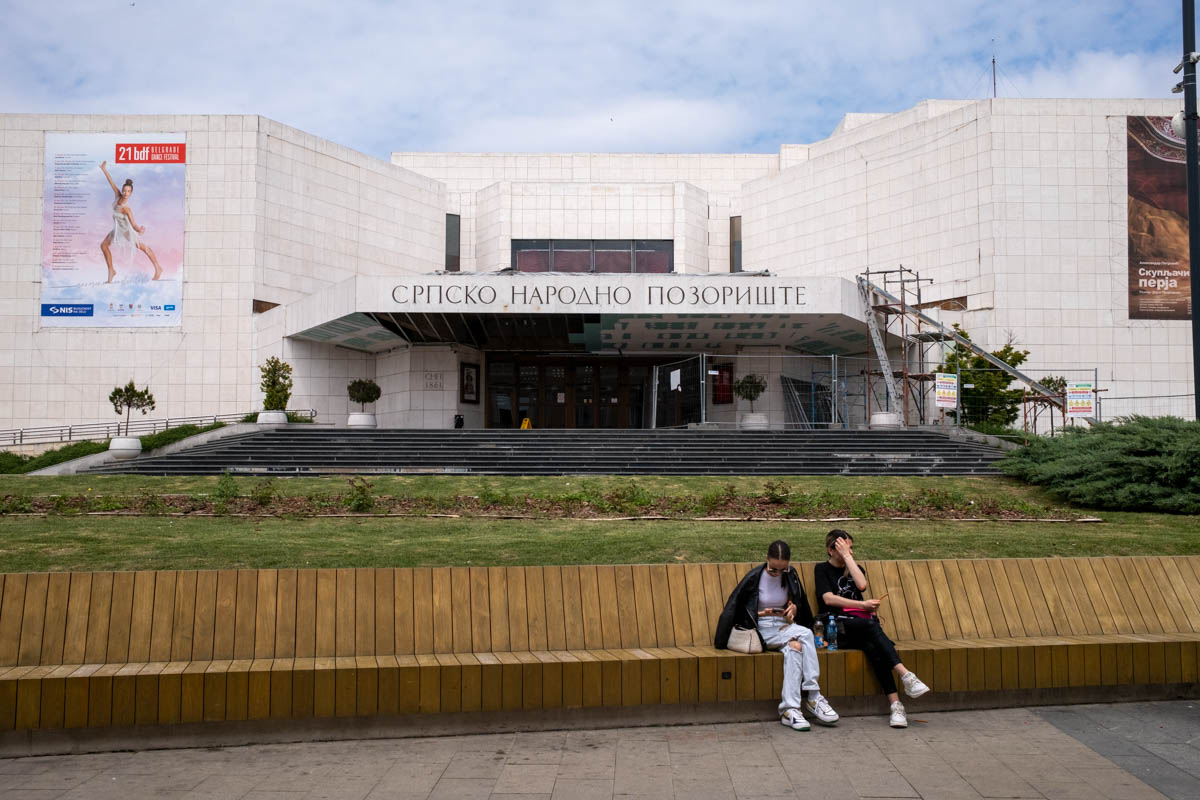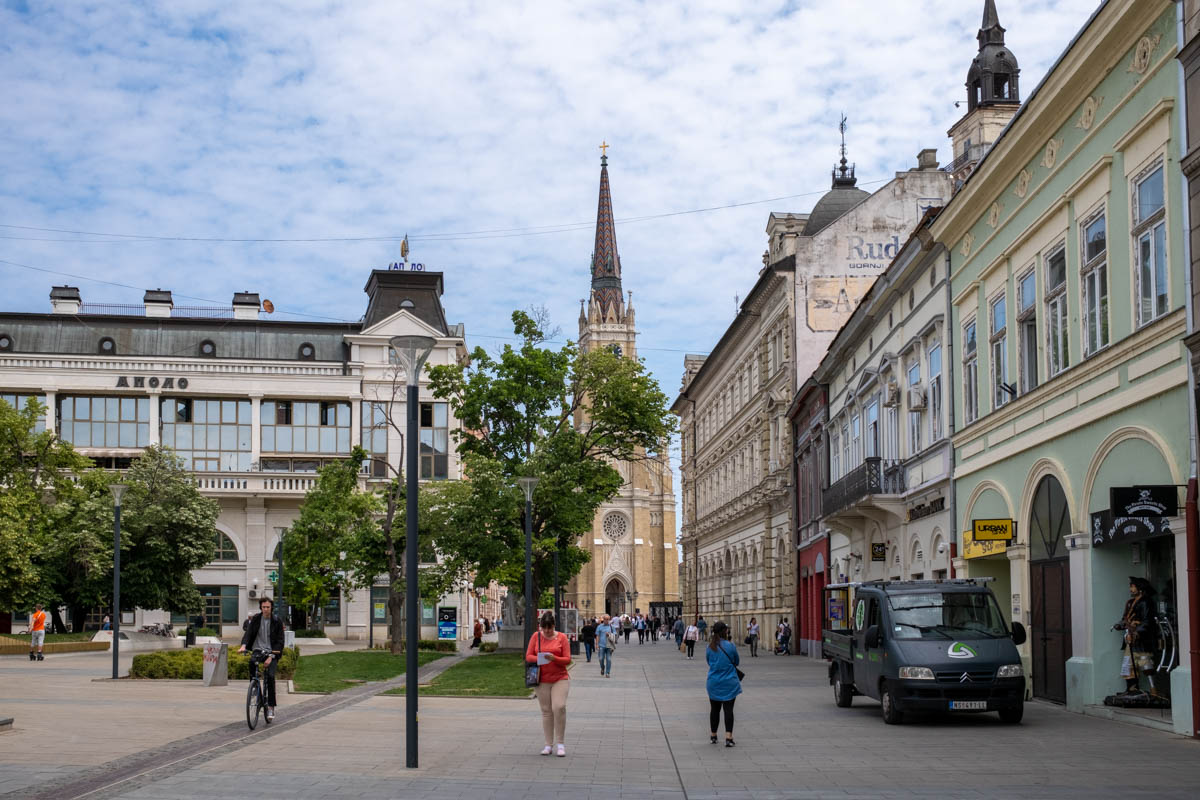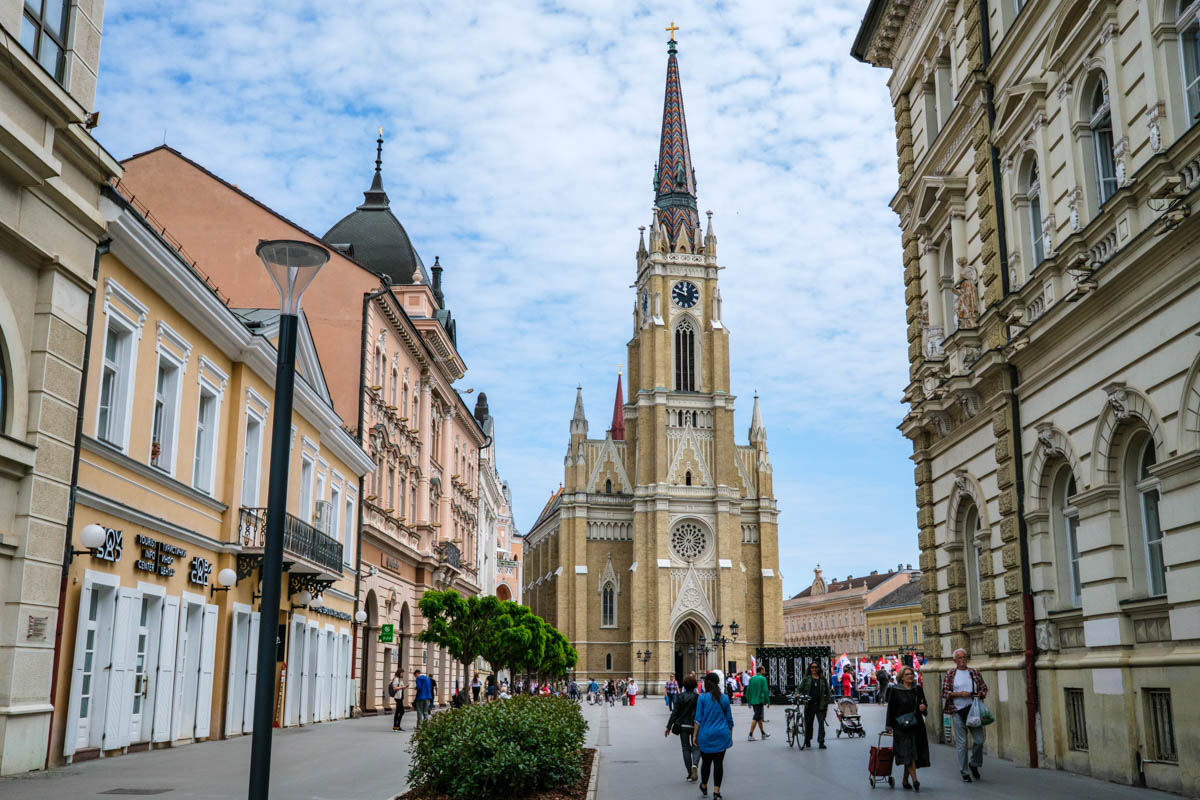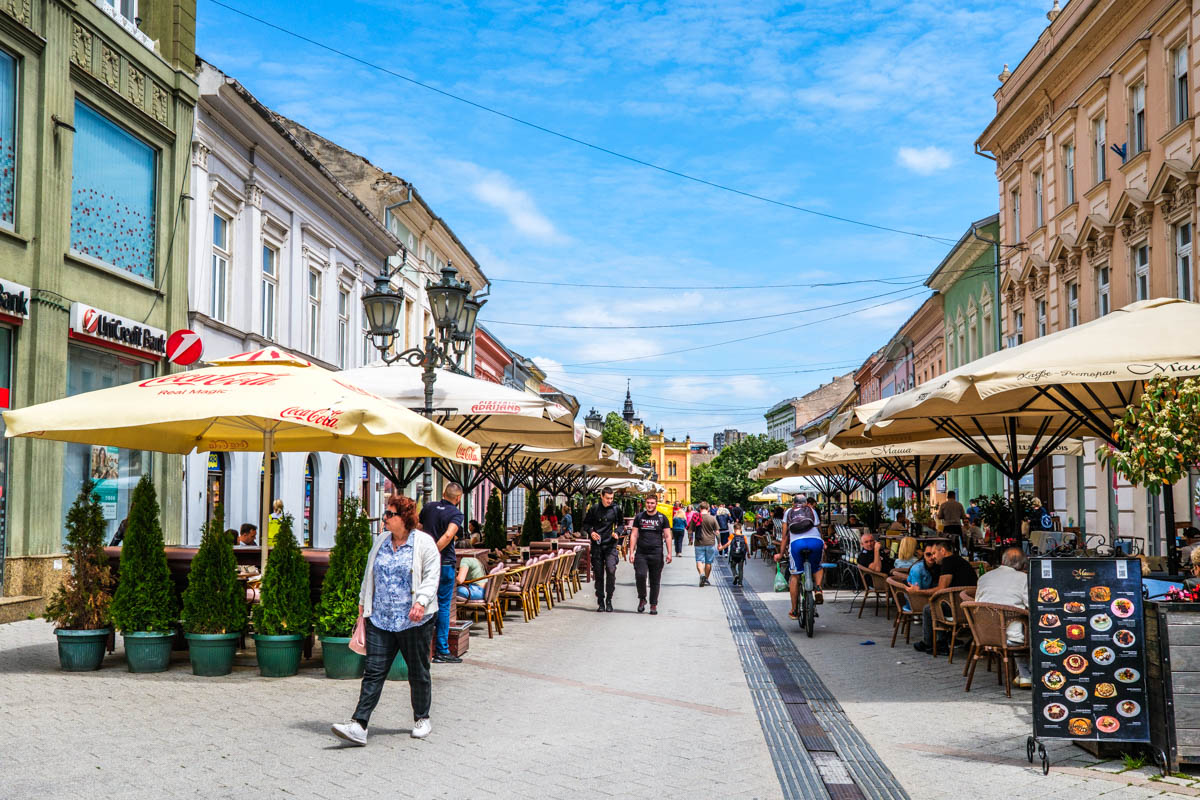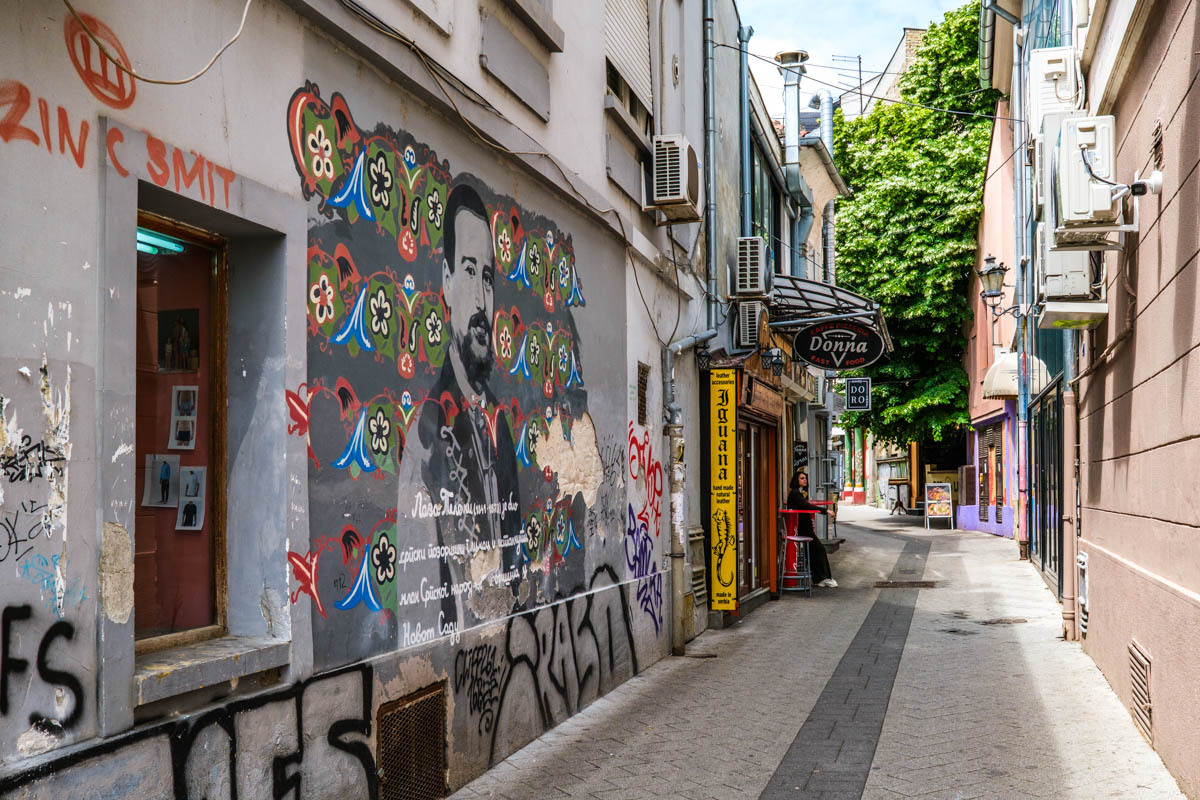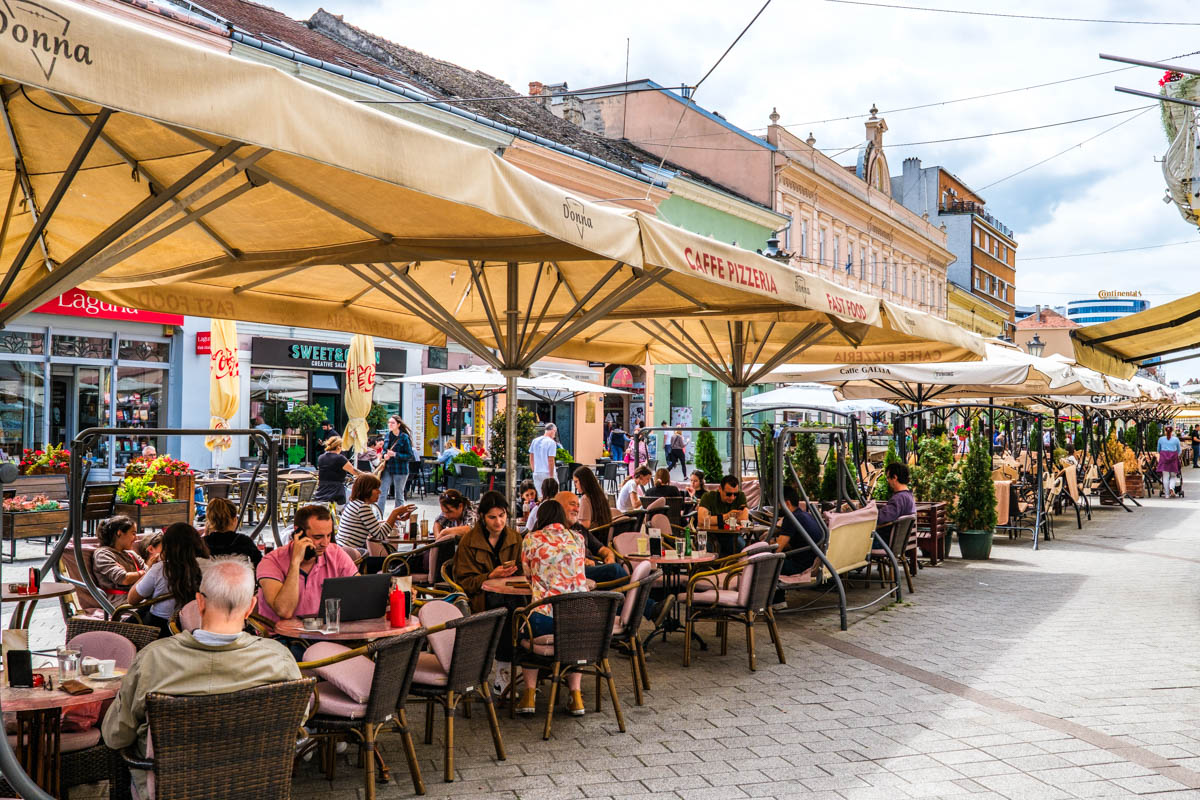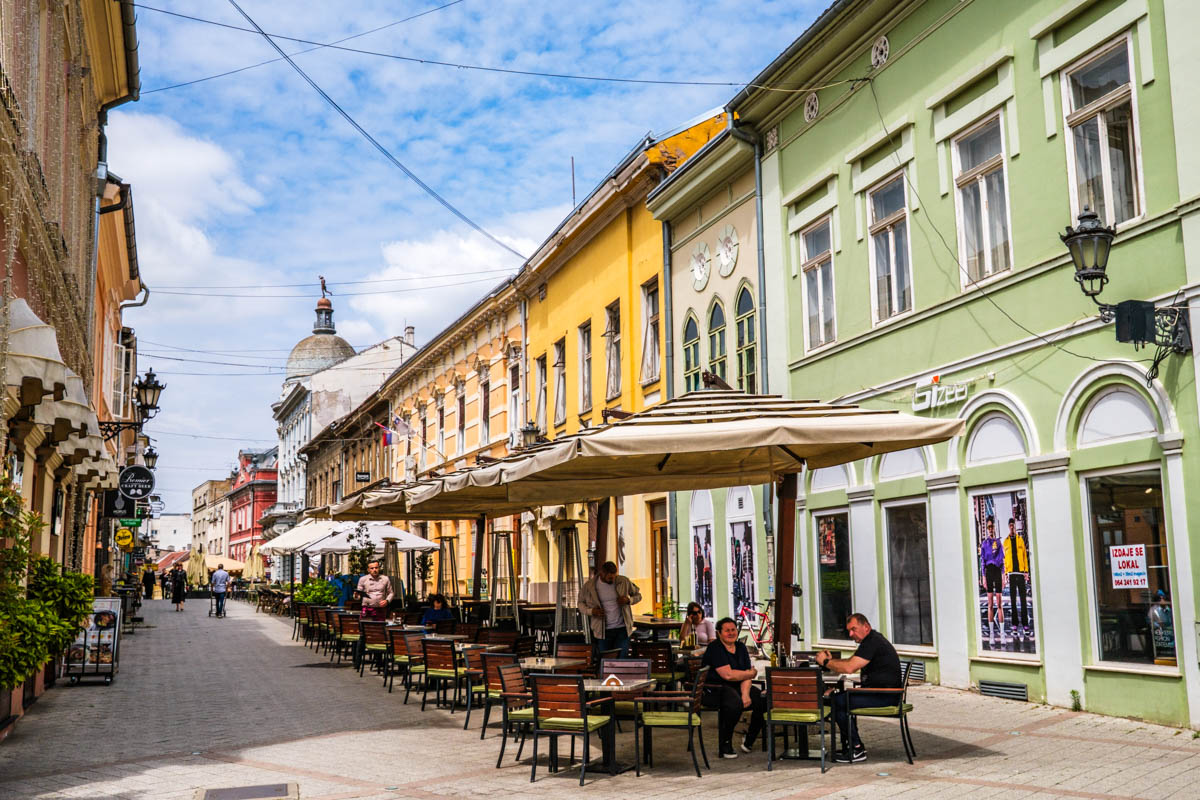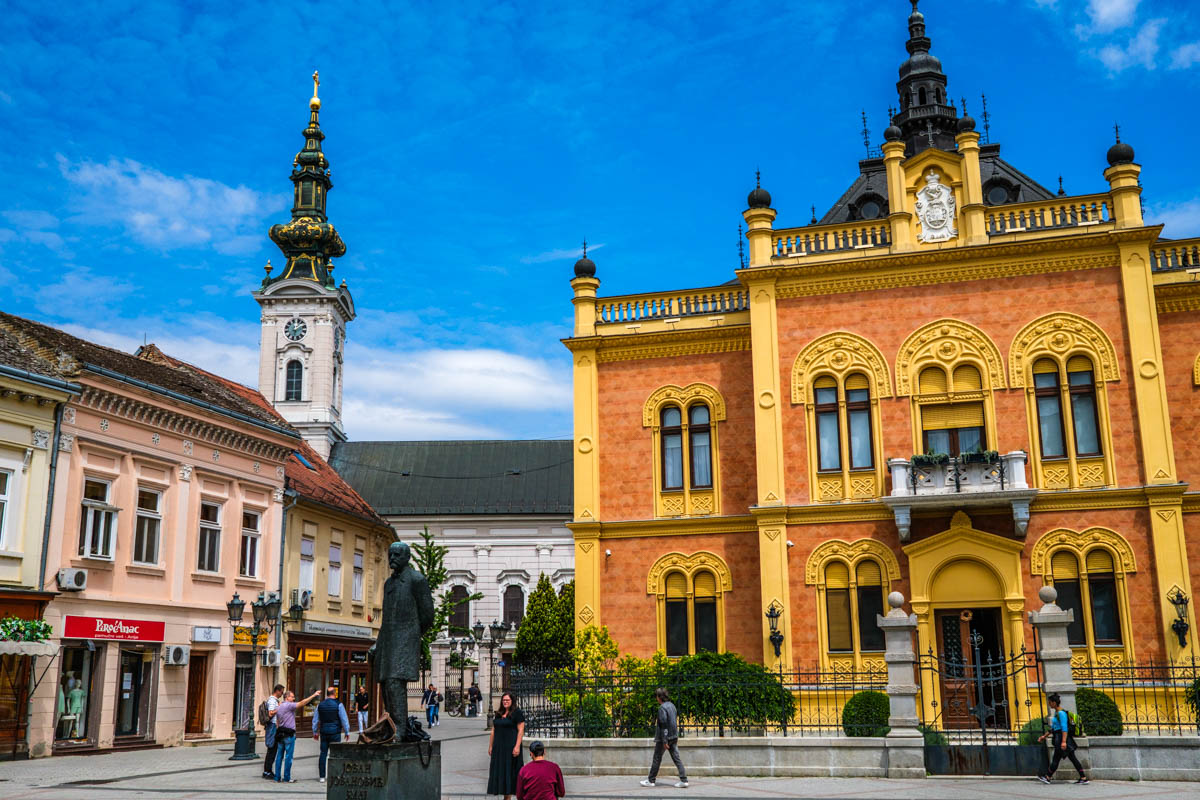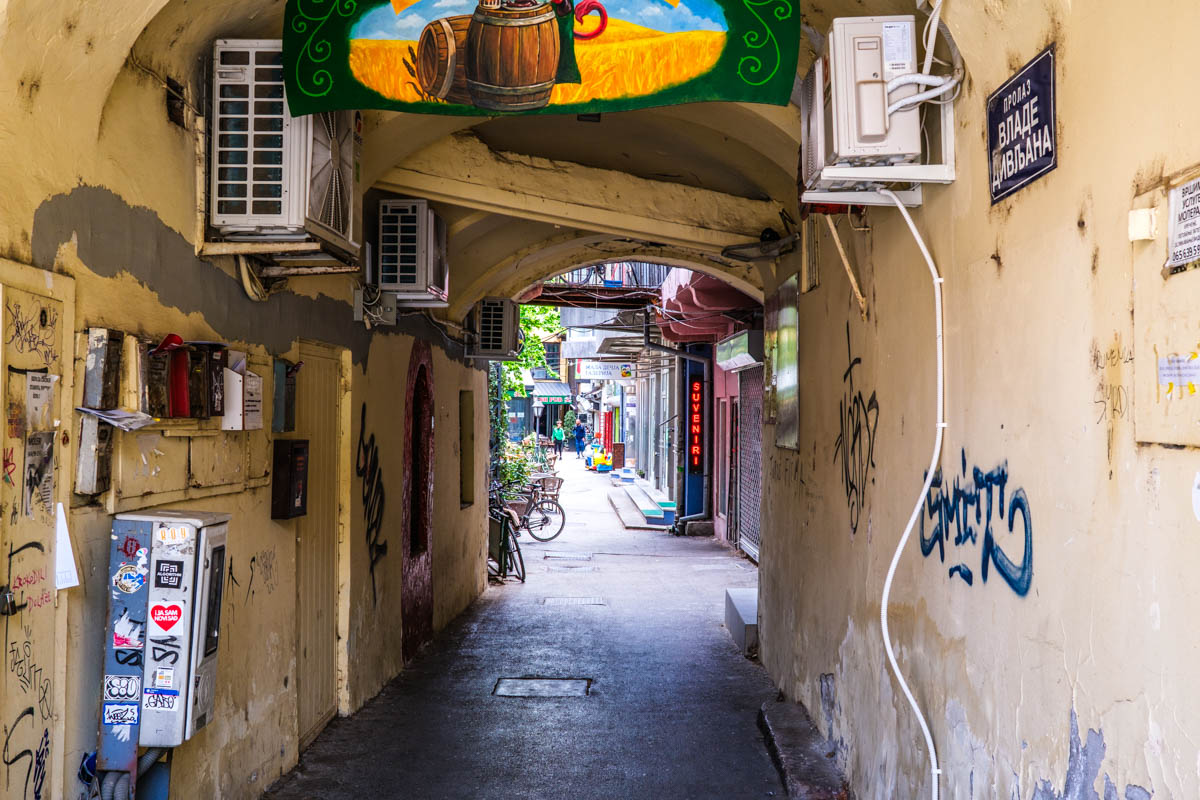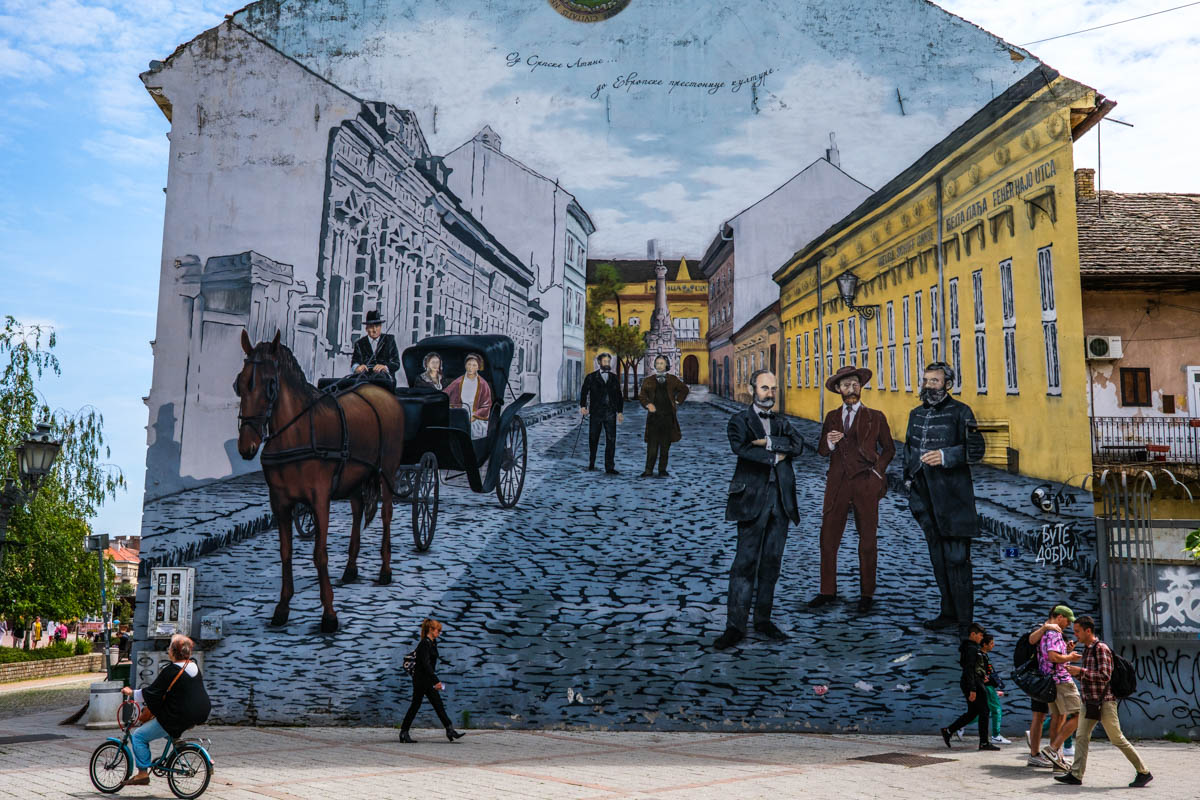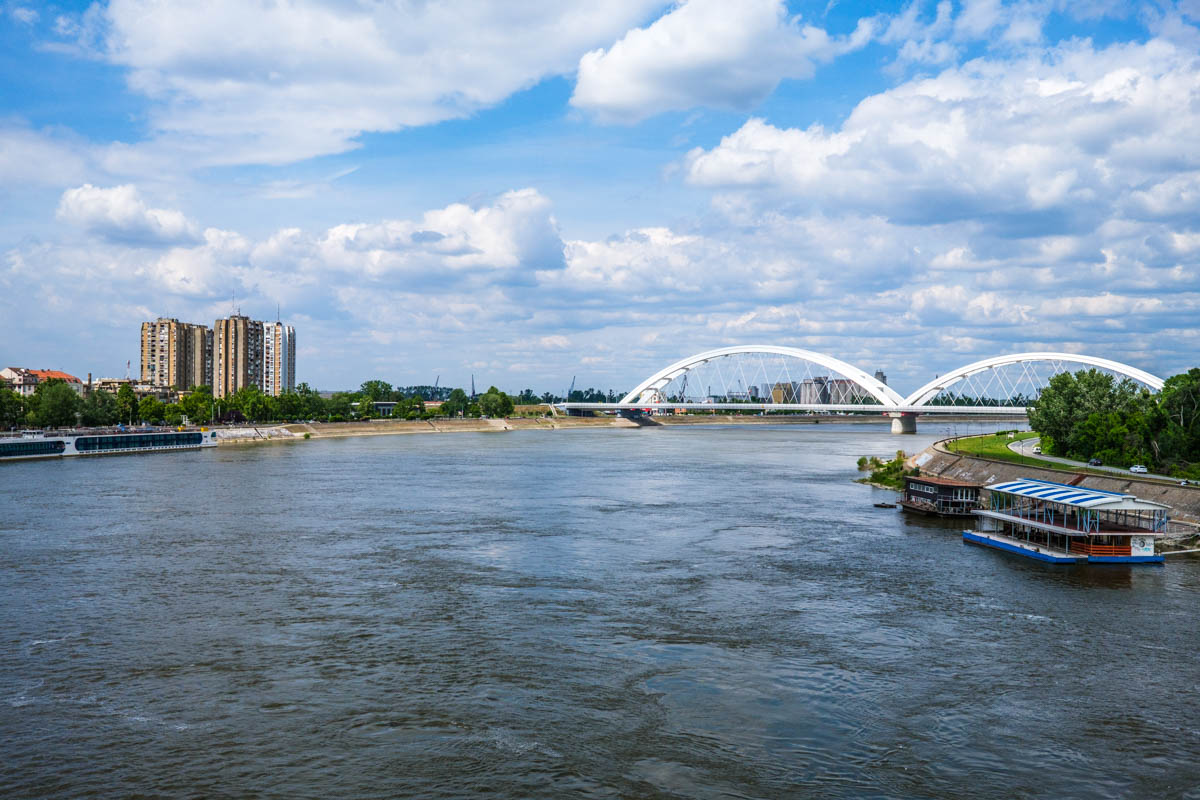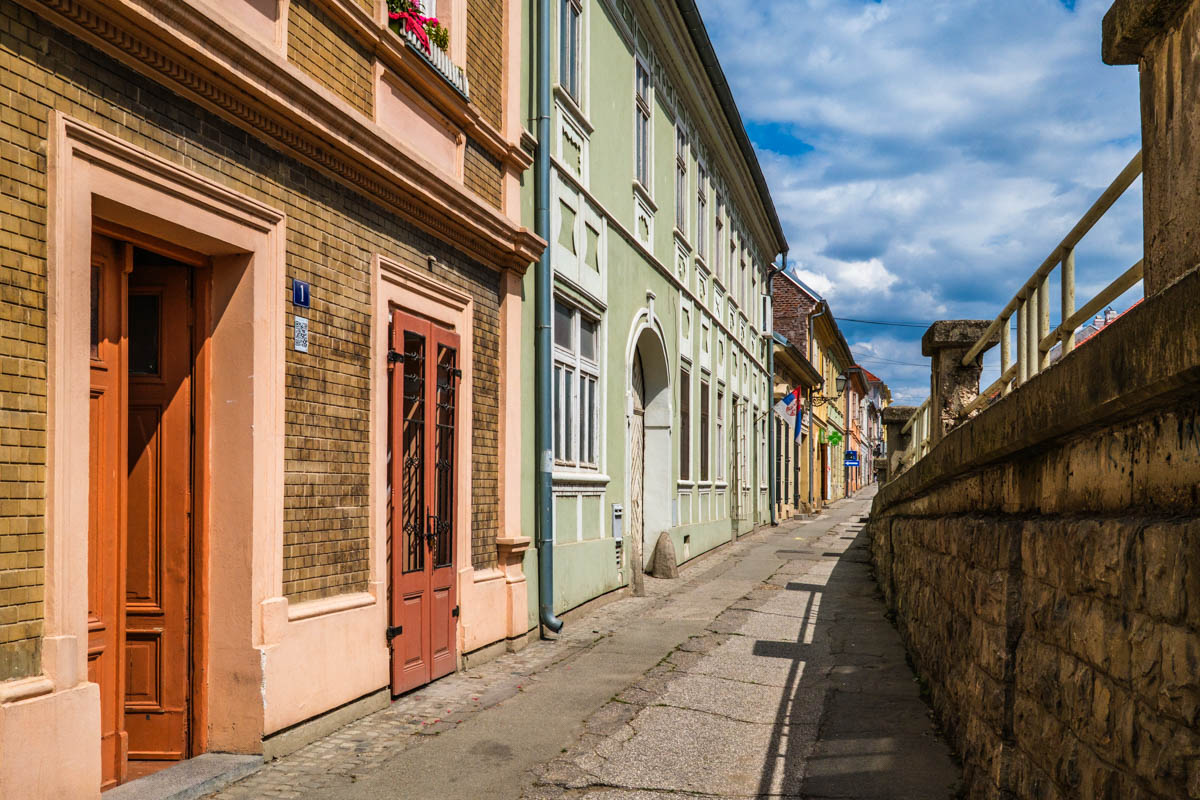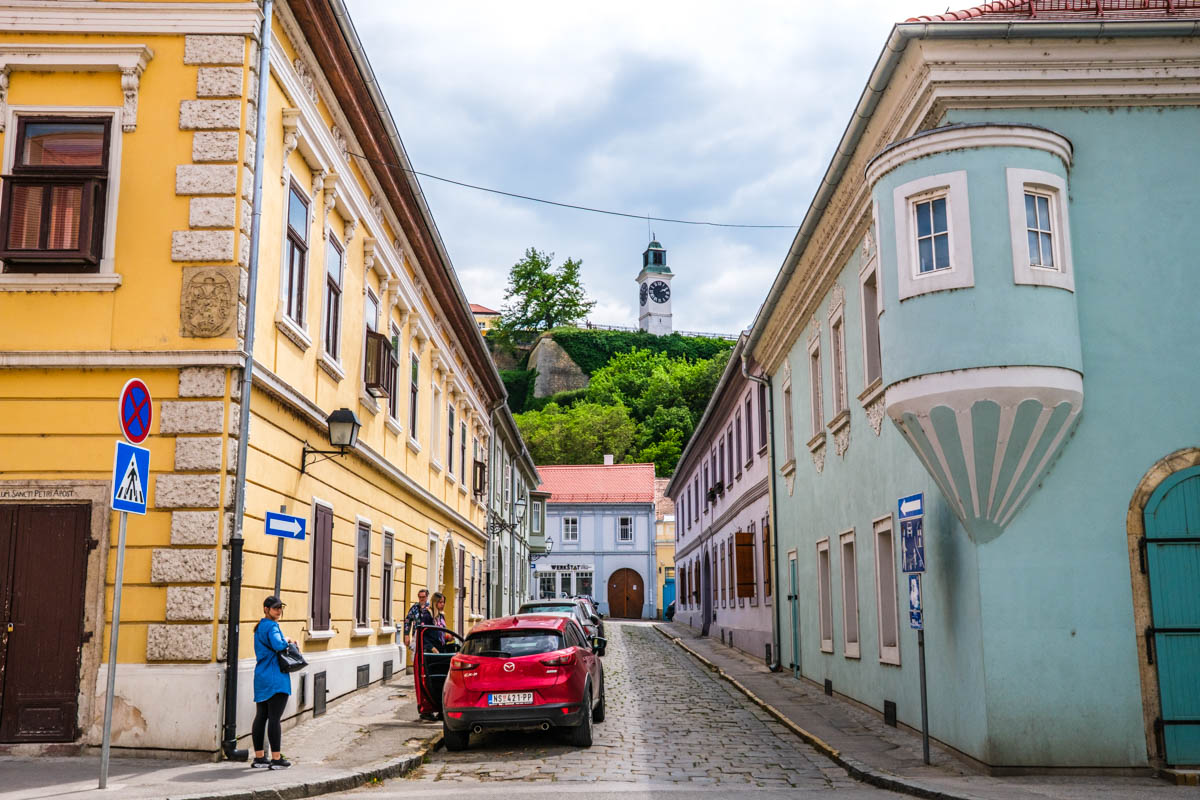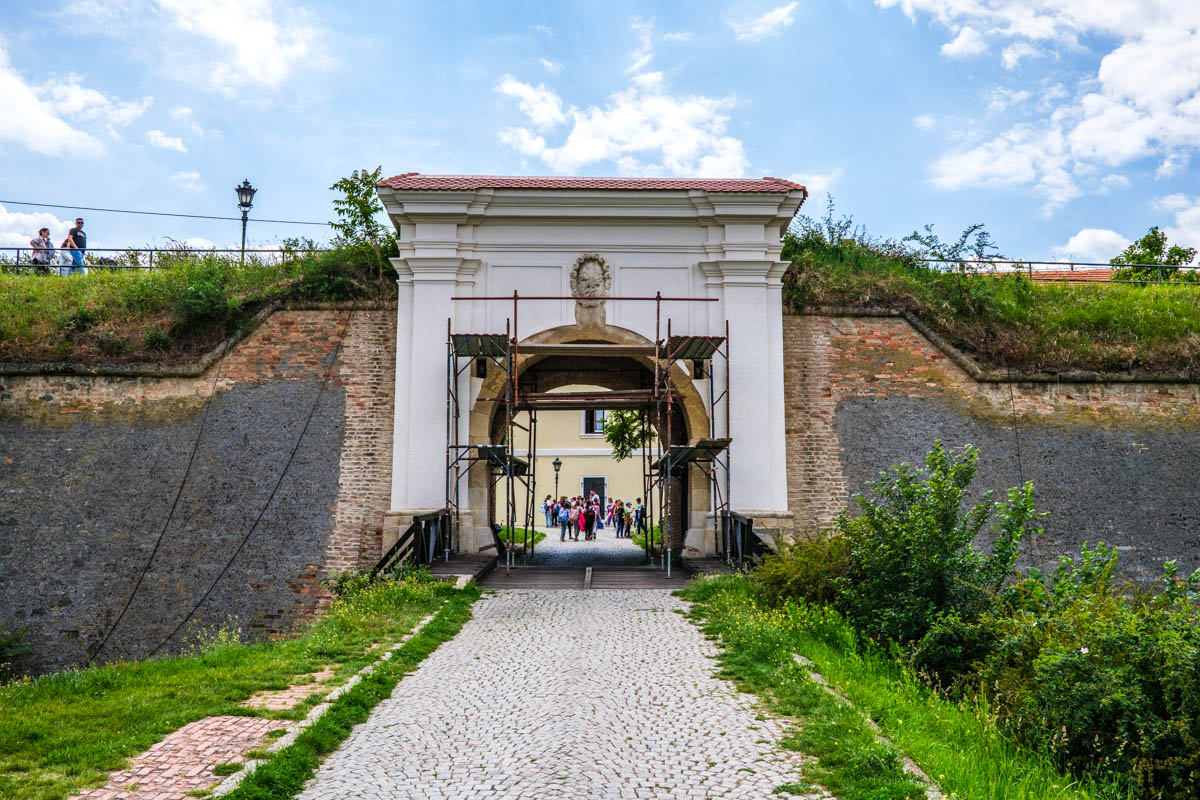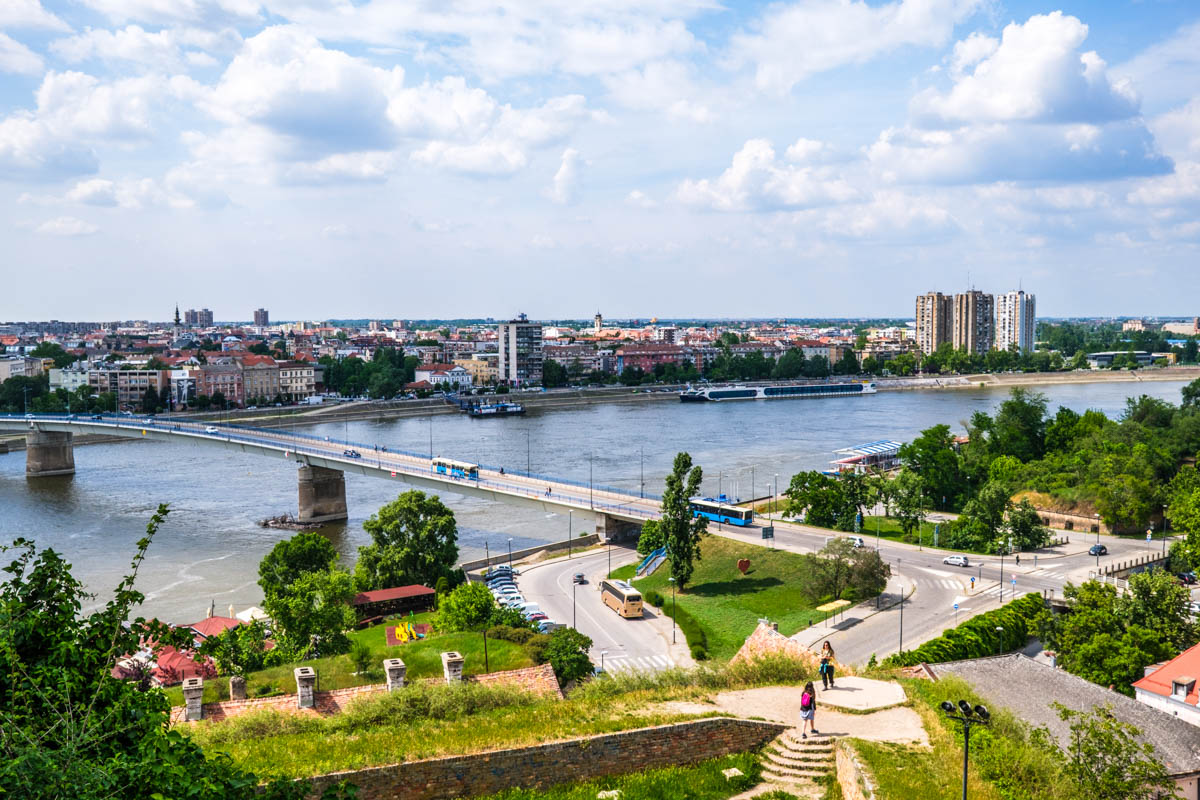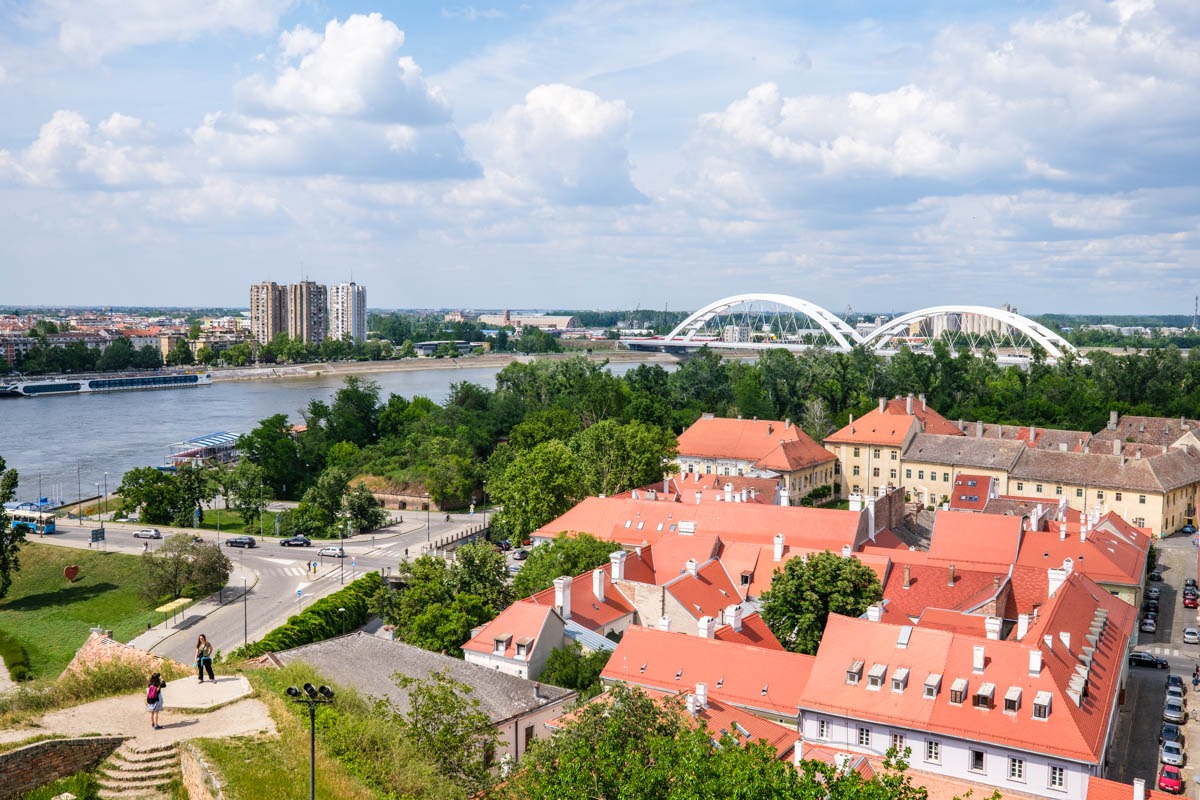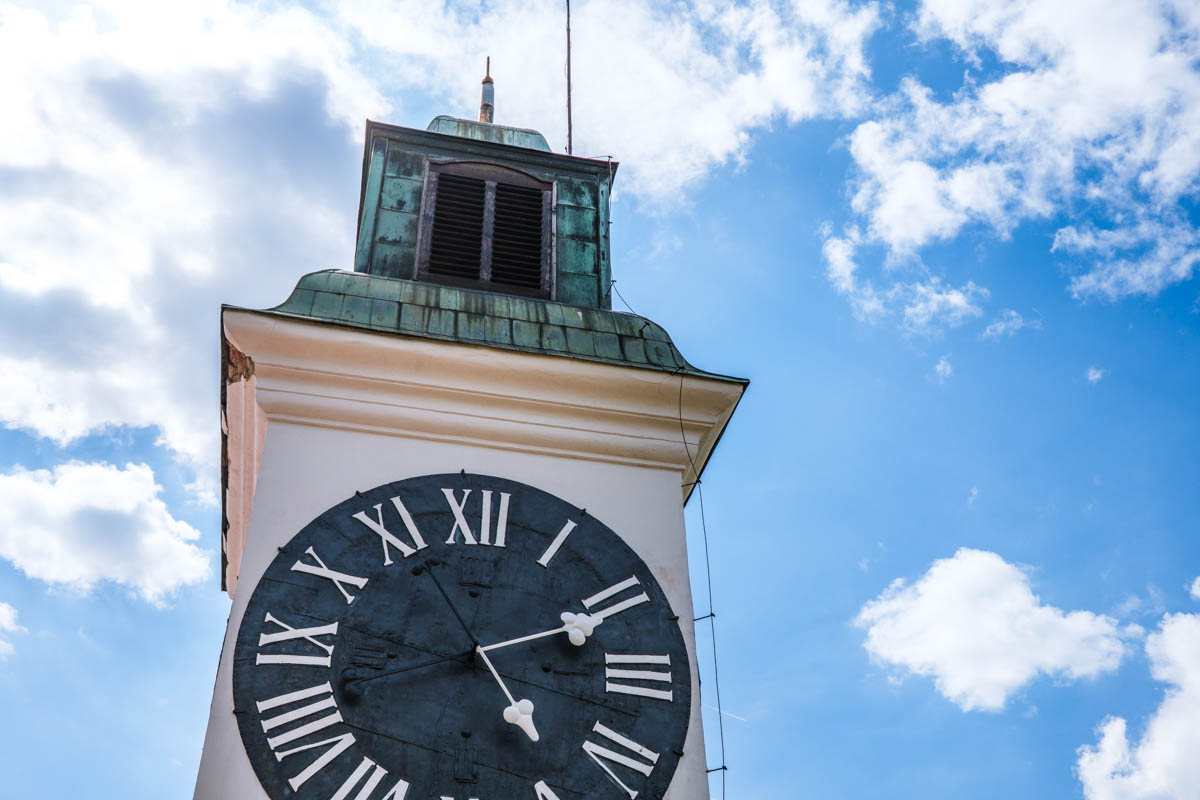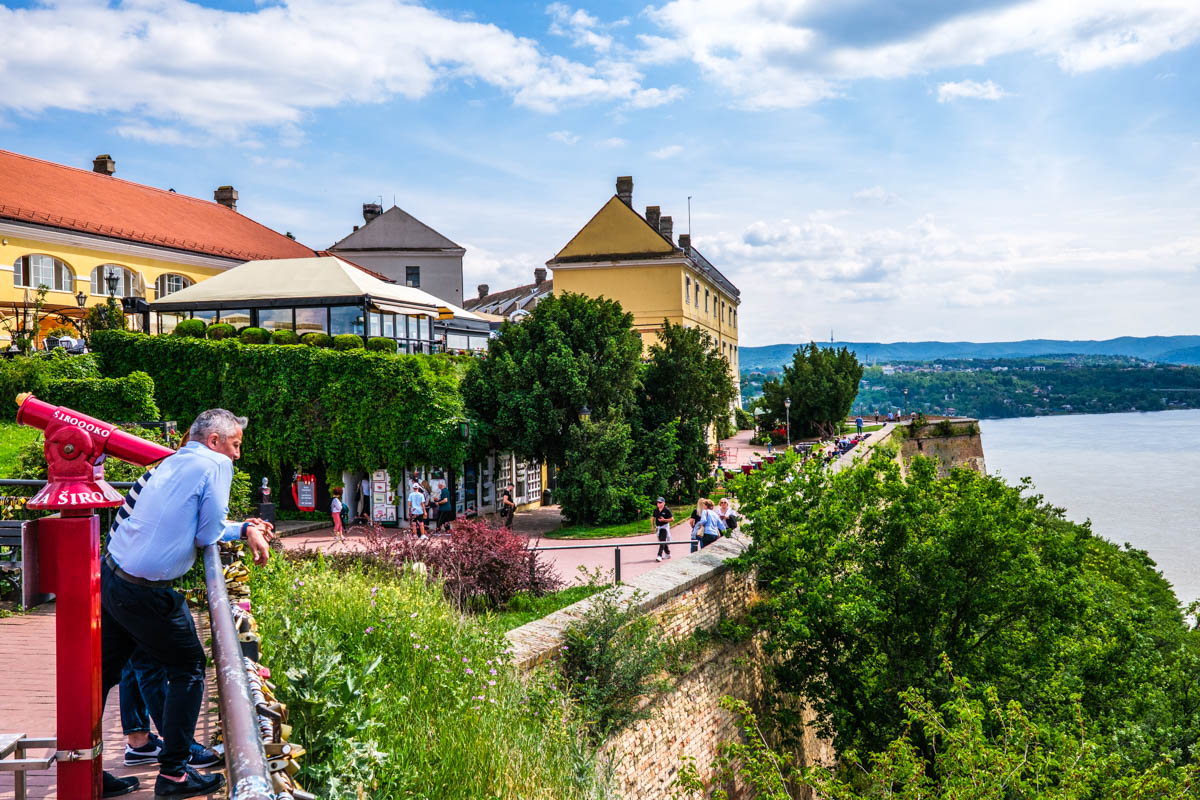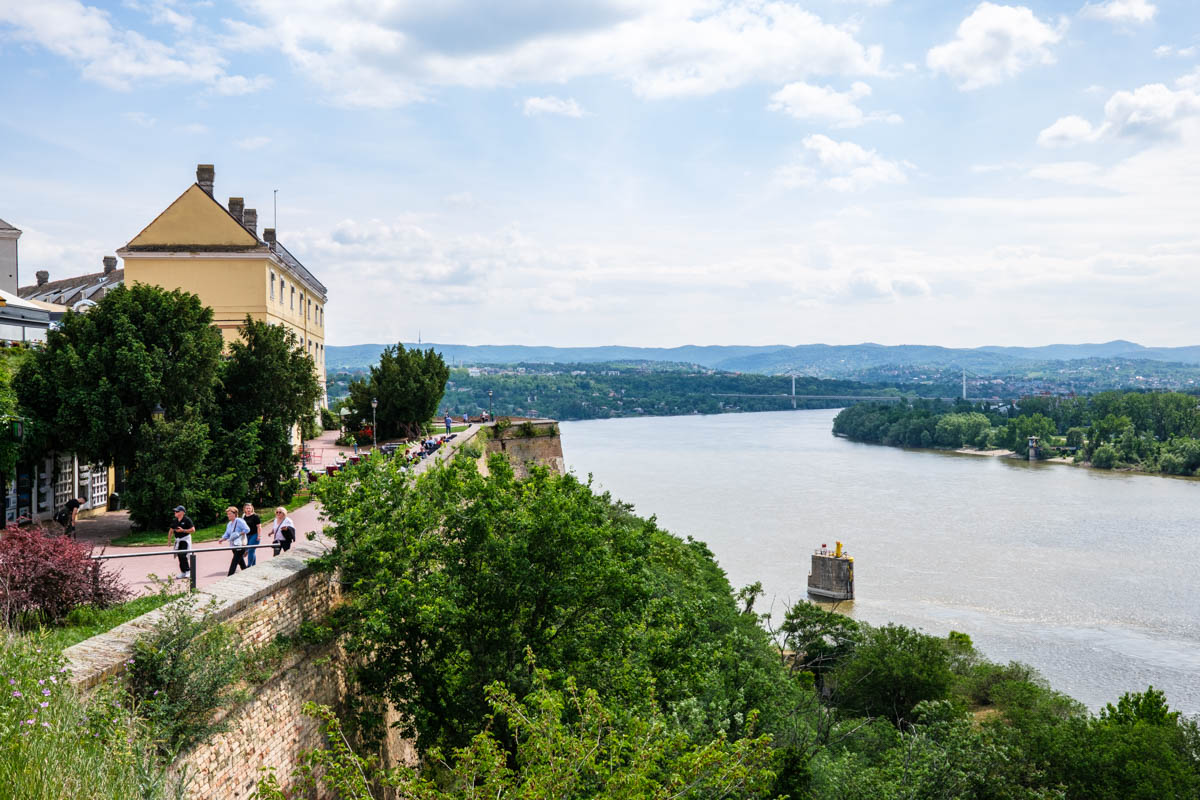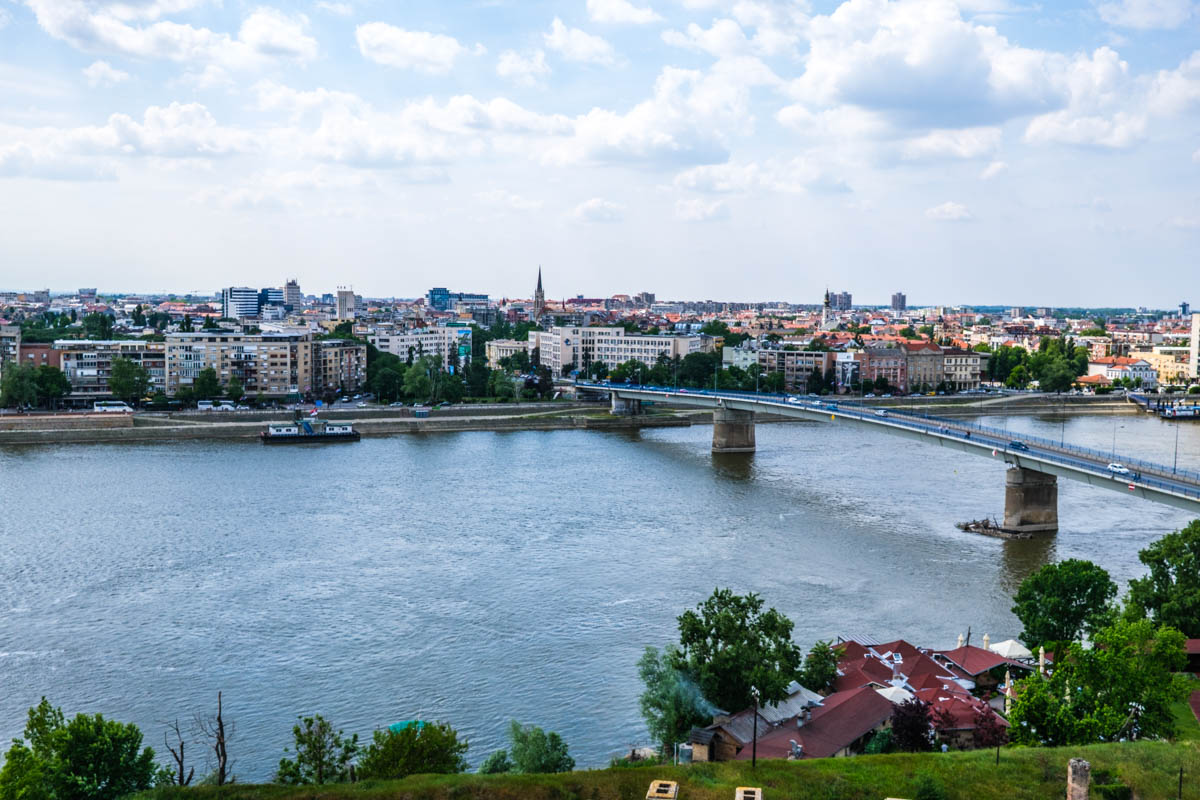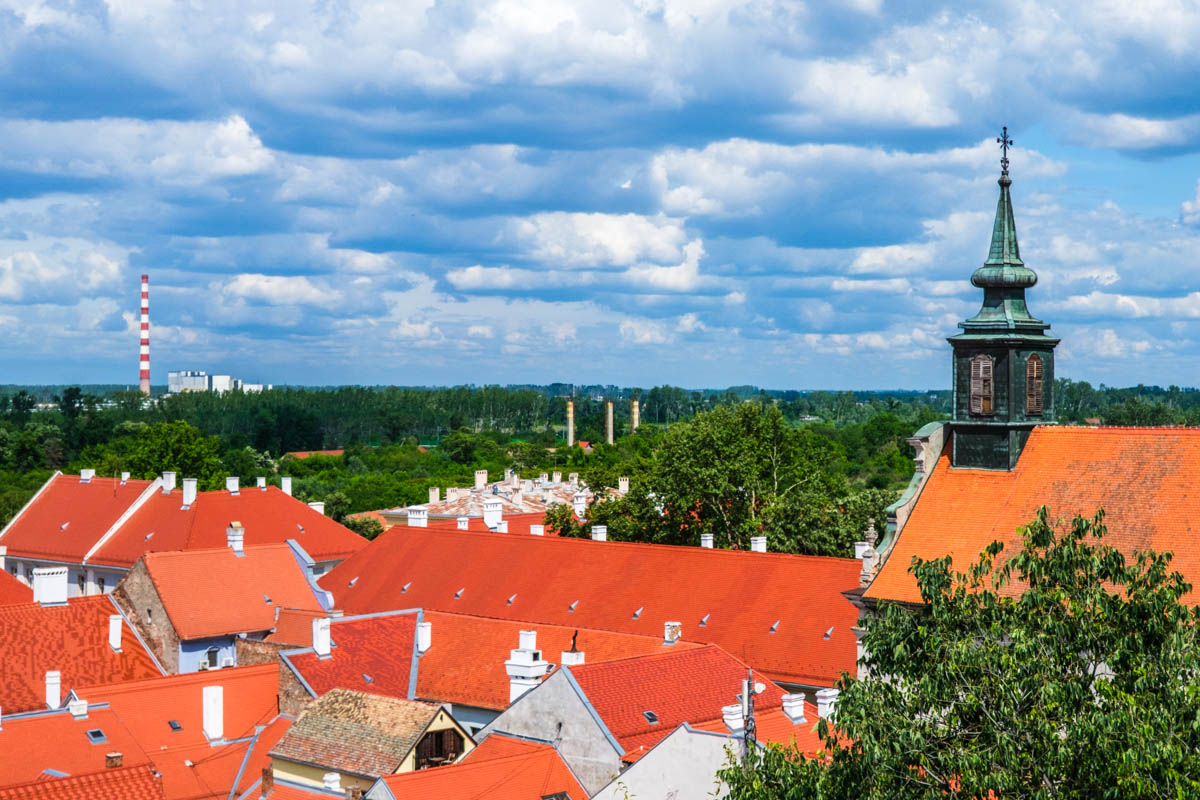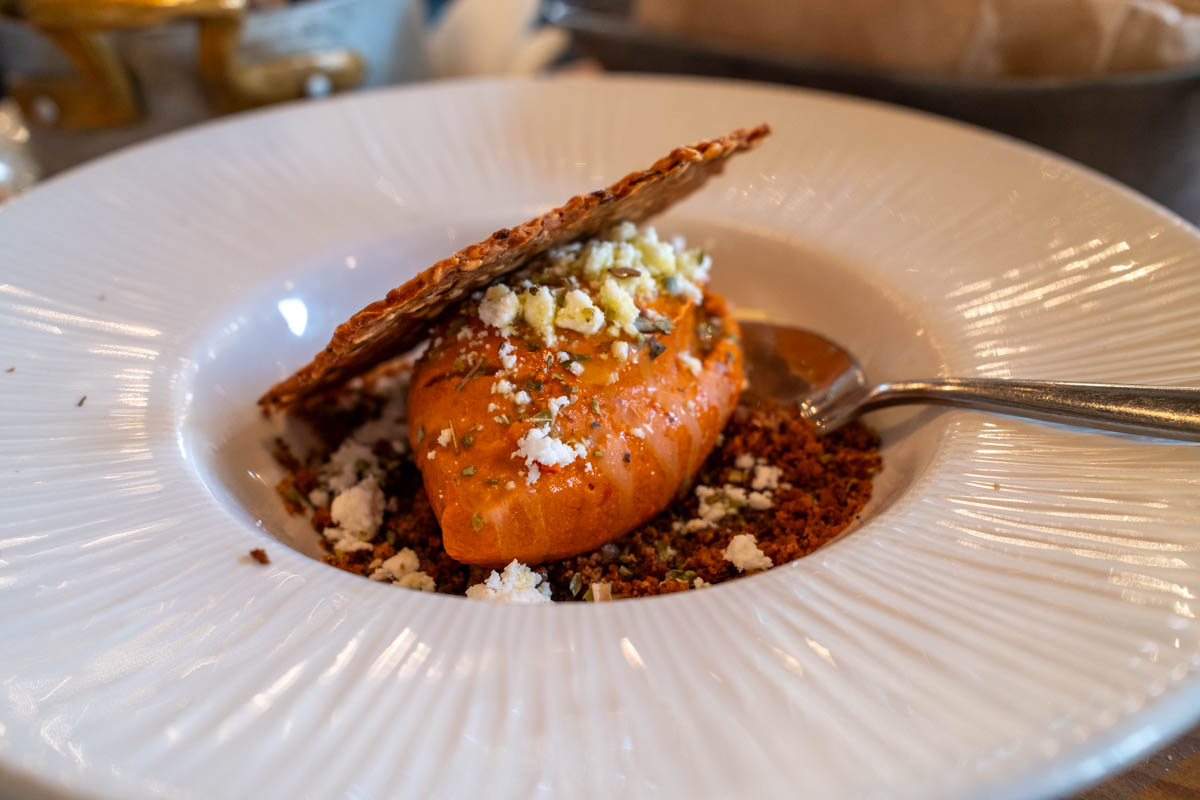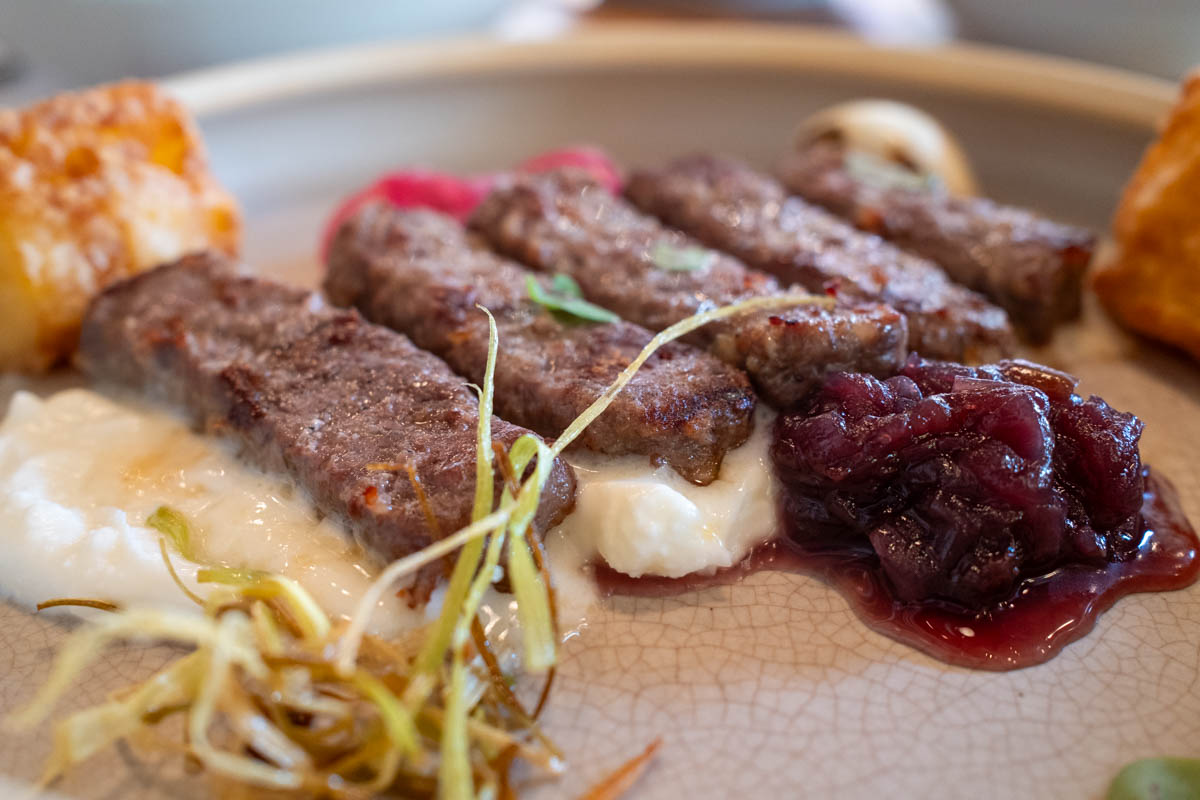NOVI SAD | Serbia’s second largest city, Novi Sad, is located less than an hour by train from the capital, and has a unique character of its own. It’s a diverse, open-minded city with a thriving arts scene. In 2022, Novi Sad was named the European Union’s Capital of Culture, bringing wider attention to what locals have long known.
It’s a historic city, with beautiful old architecture, and a picture perfect location on the Danube river. A great city to spend a long weekend in, here’s my list of things to do in Novi Sad.
Admire The City’s Murals
Novi Sad might be best known for its historic old town, but there’s a thriving modern art scene here too. This is perhaps most evident in the murals that can be found all over town. In the old city, murals tend to reflect the nature of the area, with historic themes and an art styles that are reminiscent of historic paintings
Outside of the old town, it’s more contemporary art, with a variety of styles and themes explored. In particular, be sure to walk along Dunavska, a notable street that’s home to several large-scale murals.
Check Out Petrovaradin’s Colourful Houses
Petrovaradin is a historic Novi Sad neighbourhood that was once a separate city. Just a short walk across the Danube, along Liberty Bridge, you’ll find a neighbourhood that’s most famous for the historic Petrovaradin Fortress. Be sure to explore the neighbourhood, as it’s full of beautifully maintained historic, colourful houses, shops, and cafes, lining narrow, cobblestone streets.
Explore Fruška Gora National Park
The oldest national park in Serbia, Fruška Gora, is located on the outskirts of Novi Sad. There’s a wide variety of activates, with plenty of cycle paths, hiking trails, swimming lakes, and fishing spots. The mountainous park home to 16 old Orthodox monasteries, some of which are hundreds of years old. It’s also home to several wineries.
A lot of what the park has to offer is accessible by foot or bike, but if you want to check out the monasteries and wineries, your best bet is go on a preorganised tour, or hire a car for the day.
Go To A Museum
If you’re a lover of art or history, Novi Sad has no shortage of museums for you to visit. The Museum of Vojvodina is the city’s history museum, and is home to over 400,000 artefacts, covering 70,000 years of the region’s history. Of particular note, is the museum’s collection of ancient Roman helmets.
The Gallery of Matica Srpska, established in 1847, is one of the largest and oldest galleries in Serbia. It’s known for its extensive collection of paintings from all eras of history, through to the present day.
If you want to learn more about the city itself, the City Museum of Novi Sad is well worth a visit. It’s filled with artefacts from the city’s past.
Purchase Local Produce At Futoška Pijaca
The centrally located Futoška market was established in the early 1900s and continues to be one of the best places in Novi Sad to purchase the best fresh produce from the region’s independent farmers, growers, and artisans.
Open every day of the week, the market is home to around 50 vendors. You’ll find things like amazing quality seasonal fruit and vegetables, dairy products, pasta, cured meats, honey and preserves, and more.
Another Novi Sad food market worth checking out is Riblja Pijaca.
Relax At Štrand
Spanning 700 metres along the Danube, the Štrand is an inner-city beach that locals flock to when the weather is nice. Whether it’s sunbathing on the sand, going for a swim, or having a drink and bite to eat at one of the area’s floating bars, or beachside cafes, spending time at the Štrand is a great idea.
Sample Regional Cuisine
It might only be an hour by train from Belgrade, but Novi Sad has a cuisine that’s distinct from the south of Serbia. This is due to the fact that Novi Sad was, for most of its history, part of the Austria-Hungary Empire, not the Ottoman Empire. Serbian classics like ćevapi, burek, and sarma can be found in Novi Sad, but you’ll also find things like goulash, and fis paprikas. The berries and cheeses from this region are outstanding too.
My favourite restaurant in town is Project 72, a wine bar and restaurant which puts and contemporary spin on traditional dishes and flavours to great effect. They also have an excellent selection of regional wines.
See A Place Of Worship
Novi Sad is one of Serbia’s most diverse cities, and this is reflected in three of its grandest, oldest places of worship. There’s the gothic-revival Catholic church that was completed in 1894, in the city’s main square; the, a pink-hued Orthodox Bishop’s palace which was built in 1901 to replace the 1741 old palace that was destroyed by fire; and the majestic Novi Sad Synagogue. The latter dates back to 1909, the fifth Synagogue on this site, and is today used as a cultural centre. All three are beautiful, interesting buildings that are worth a visit.
Visit Petrovaradin Fortress
Novi Sad’s most visited attraction is Petrovaradin Fortress. Nicknamed “Gibraltar on/of the Danube”, the current fortress dates back to 1692, with evidence suggesting that a fortress has existed on this site since at least 3000 BC.
Built from stone, and overlooking the Danube, it’s an imposing structure, famed for having never been infiltrated by an invading army. Be sure to explore not just the fortress, but the extensive network of tunnels underneath it.
If you’re in Novi Sad during the summer and love live music, you should try and get tickets to EXIT festival, which is held at the fortress each year. It’s one of the biggest music festivals in Europe, featuring a diverse range of indie and mainstream artists from across the globe.
Walk Through Novi Sad’s Old Town
Novi Sad’s Old Town (Stari Grad), is located in the heart of the city, and is a must visit for its beautiful architecture. Pastel painted historical buildings, cobblestone streets, and greenery dominate the old town, which is filled with cafes, bars, independent retail, and more.
The city was almost completely destroyed during the 1848/1849 revolution, so the architecture is predominantly that of the 19th century. Given the city’s place and importance in the Austrian and Austro-Hungarian Empires, the architecture is similar to that of nearby grand cities like Vienna and Budapest.


